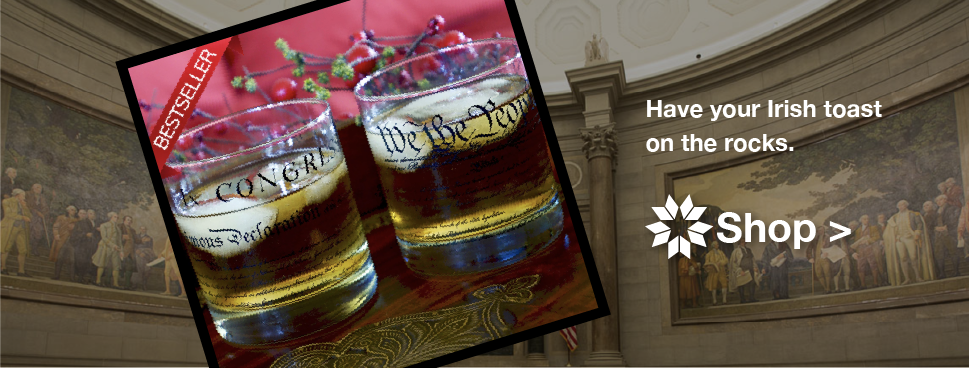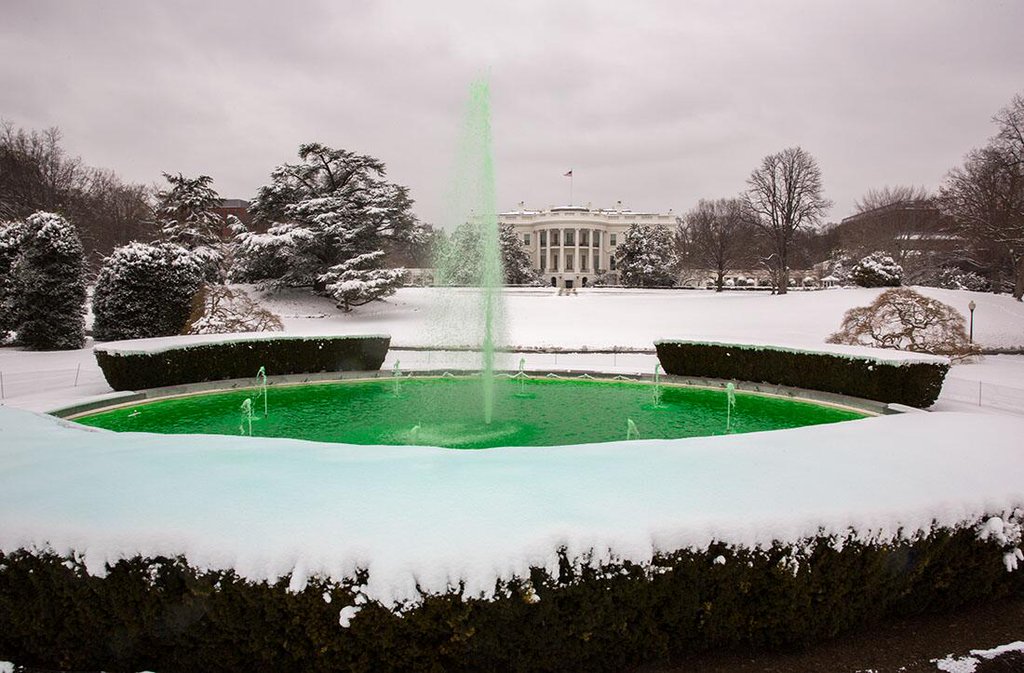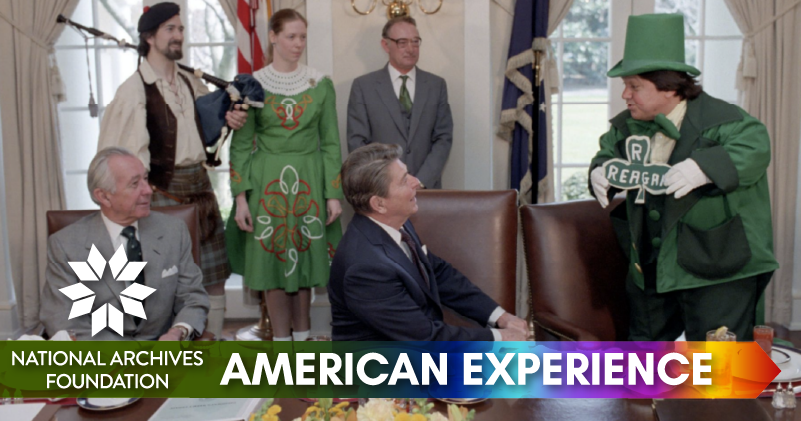Archives Experience Newsletter - March 15, 2022
Luck of the Irish
Top o’the morning – or afternoon by the time you are reading this! There’s perhaps no greater celebration of Irish-American heritage than St. Patrick’s Day. Though the Irish have observed this holiday as a religious festival for more than 1,000 years, it’s the Irish-American celebrations that conjure the popular images of shamrocks, leprechauns, and their pots of gold. Not to mention anything that can be dyed or turned green. (Hello, McDonald’s Shamrock Shake!)
I grew up with a father who was 100% Irish and that was proudly on display 100% of the time. Whether he was talking about the natural beauty of Ireland’s windswept fields, the Emerald Isle’s towns where his Irish ancestors lived, or the Fighting Irish of Notre Dame – he was all in, year-round. St Patrick’s Day was yet another chance to remind friends and neighbors of his kelly green allegiance. As you can imagine his vibe did rub off. Yes, I will be wearing plenty of green on Thursday.
In honor of this St. Patrick’s Day we have our own pot of gold to share via the documents that chronicle the stories of Irish-Americans and their contributions to our nation.
☘️

Patrick Madden
Executive Director
National Archives Foundation
From Religious Feast to Festival
In two days, all of us might feel just a little bit Irish. We will celebrate St. Patrick’s Day by wearing green clothes and shamrocks, watching—or marching in—parades, eating corned beef and cabbage, and drinking green beer. In Chicago, they will even dye the Chicago River green. Many Presidents have joined in the spirit of the day, hosting dinners and making speeches embellished with more than a touch of blarney.

Source: JFK Library
The holiday commemorating St. Patrick began as a religious observation. Born in Britain to a prosperous Romanized family in the late fourth century, young Patrick was kidnapped and enslaved in Ireland at about the age of sixteen. After six years, he escaped and returned to his family in Britain, but soon thereafter, he had a vision that called him to return to Ireland as a minister for the Lord.
Despite being concerned about his safety, Patrick was extraordinarily successful in his ministry. He labored far and wide within Ireland, doing his best to be fair to both Christian and non-Christian Irish alike. He built churches and schools, and—probably not surprisingly—he was adamantly opposed to slavery. He is also said to have used the shamrock to explain the concept of the Trinity to an unbeliever. Most famously, he is credited with driving the snakes out of Ireland, but this is doubtful—there were no snakes in Ireland when Patrick was alive.
By tradition, St. Patrick died at Saul in what is now Northern Ireland in the early fifth century. The feast day commemorating his death on March 17 has officially been observed by the Catholic Church since the 17th century. St. Patrick’s Day is celebrated as a religious and secular holiday worldwide—sometimes quite raucously, and quite likely in places close to where you live.
The Irish Experience
By the middle of the nineteenth century, the Irish were suffering greatly because of years of oppression by their British landlords. Many of them were subsisting on tiny plots of land that were so poor that they could only grow potatoes. The Irish were eating staggering amounts of potatoes to survive—one scholar estimated that the average individual was eating between seven and fourteen pounds of potatoes a day!
The strain of Phytophthora infestans that first devastated the Irish crop in 1845 was the straw that broke the camel’s back. During what is called the Great Hunger, a million people died, many of starvation and others of diseases like typhus, cholera, and tuberculosis. The only actions available to the Irish people were to stay in Ireland and starve or to immigrate.
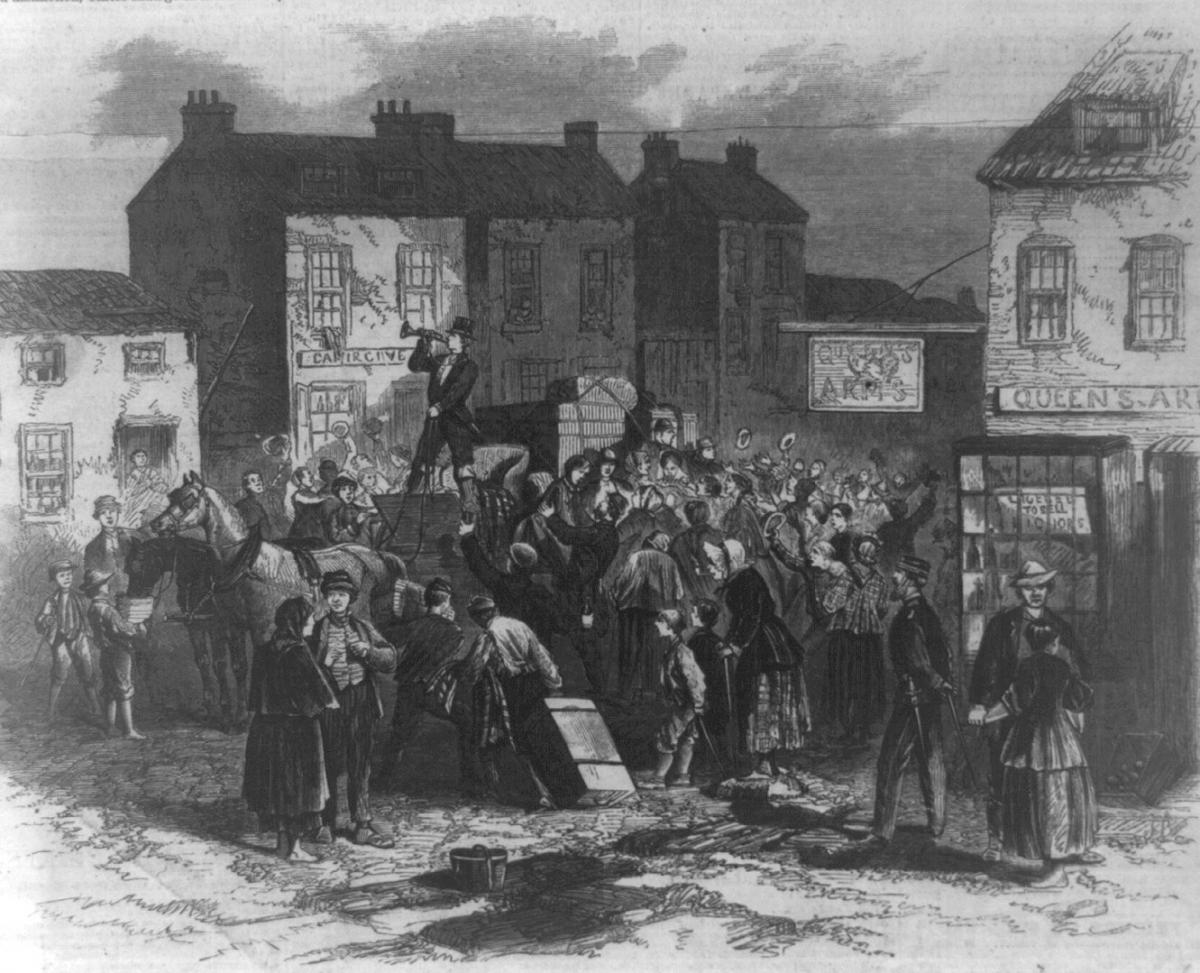
Ireland’s Famine Children “Born at Sea”
in Prologue Magazine
More than two million chose to leave their country. They packed into some 5,000 ships bound for places where, they hoped, they at least would not starve to death. Most of them arrived in the United States, more than 640,000 passing through the Port of New York alone. The National Archives is the repository of records of Irish immigrants who entered the United States through the Port of New York between 1846 and 1851. Want to find your family? Start here! On the way to America, 8,075 babies were born at sea.

Exploring Irish History Through the Famine Files and Other Arrival Records
in the Pieces of History blog
The Irish immigrants were most certainly not welcomed to America with open arms—quite to the contrary, they were accused of being dirty, vermin-ridden, and diseased. They were called criminals, rapists, and followers of a suspicious foreign religion and a foreign leader. People who had been in the U.S. longer said the Irish were taking jobs from American citizens. The Irish were discriminated against in the workplace and at city hall. A political party, the Native American Party (no connection to Indigenous Peoples), also called the No Nothing Party, was formed to oppose Catholic immigrants, among whom Irish immigrants prominently figured. Does any of this sound familiar?
And lest you think the Irish have long since lived down their reputation as undesirables, as recently as 1989, Senators Edward “Teddy” Kennedy and Alan K. “Al” Simpson were debating whether people from Northern Ireland should be allowed to immigrate to the United States. This was at the height of the Troubles, the three-decade period of violence, particularly bombings and shootings, that racked Ireland, Northern Ireland, and the UK. The root cause of the Troubles was the status of Northern Ireland, with many Unionists and Loyalists wanting the country to remain part of the UK and many Nationalists and Republicans wanting it to rejoin Ireland. At that time, the U.S. government suspected that people from Northern Ireland might be terrorists. Fortunately, peace talks would begin in the ‘90s – but we’ll cover that in a later story!
specifically Northern Ireland, on March 17, 1989
Source: JFK Library
The “Irish Brigade”
Stories From Our Holdings: Irish Researchers Study Civil War Records from the NARA/Fold3 Collaboration
in the NARAtions blog
The Irish Brigade was an infantry unit of the Union Army that was formed at the beginning of the Civil War. Designated the 69th New York Infantry, it continues to this day as a unit of the New York Army National Guard First Battalion. Now is a great time to plug the Archives’ resource, History Hub, a community posting board where the public and the team at NARA collaborate on searching the Archives.
But when it was established by Secretary of War Simon Cameron in 1861, the brigade consisted of three regiments that were almost entirely made up of Irishmen. When the war started, the 69th was sent into battle at the First Battle of Bull Run under the command of William T. Sherman. The Irish Brigade protected the Army of the Potomac as it retreated to Washington, D.C.

Source: History Hub Discussions
Throughout the Civil War, the commanders and soldiers of the Irish Brigade distinguished themselves by their courage and the ferocity of their fighting. At the battle of Fredericksburg, Robert E. Lee is alleged to have called them “the Fighting 69th.” The brigade suffered mightily for their determination—nearly a thousand of its members were killed or mortally wounded in battle, died of disease, or died in Confederate prisons.

Order Up!

(2020 and prior)
in the AOTUS blog
You might know that David S. Ferriero, the Archivist of the United States, makes a mean chocolate-chip pancake, so you probably won’t be surprised to learn that he reads cookbooks in his spare time. One of his picks in 2020 was Our Irish Grannies’ Recipes: Comforting and Delicious Cooking From the Old Country to Your Family’s Table by Eoin Purcell, which includes a surprising variety of recipes for breads, main courses, and desserts—a far cry from the traditional corned beef and cabbage and Irish soda bread.

National Archives Identifier: 5716501
But of course, if you want the traditional corned beef and cabbage, the Archives catalog has a recommendation.
Presidential Roots

President Kennedy’s address to the Irish Parliament on June 28, 1963
National Archives Identifier: 193877

Source: JFK Library

A Journey Home: John F. Kennedy in Ireland
Source: JFK Library
Visiting the Emerald Isle is a Presidential tradition, but some of those visits are more memorable than others. John F. Kennedy, whose great-grandfather had left Ireland in 1848 for Boston, traveled to Dunganstown, County Wexford, his ancestral home, in June 1963, where he was greeted with jubilation. When he left Galway, he assured the people of Ireland, “You send us home covered with gifts, which we can barely carry, but most of all you send us home with the warmest memories of you and your country.”
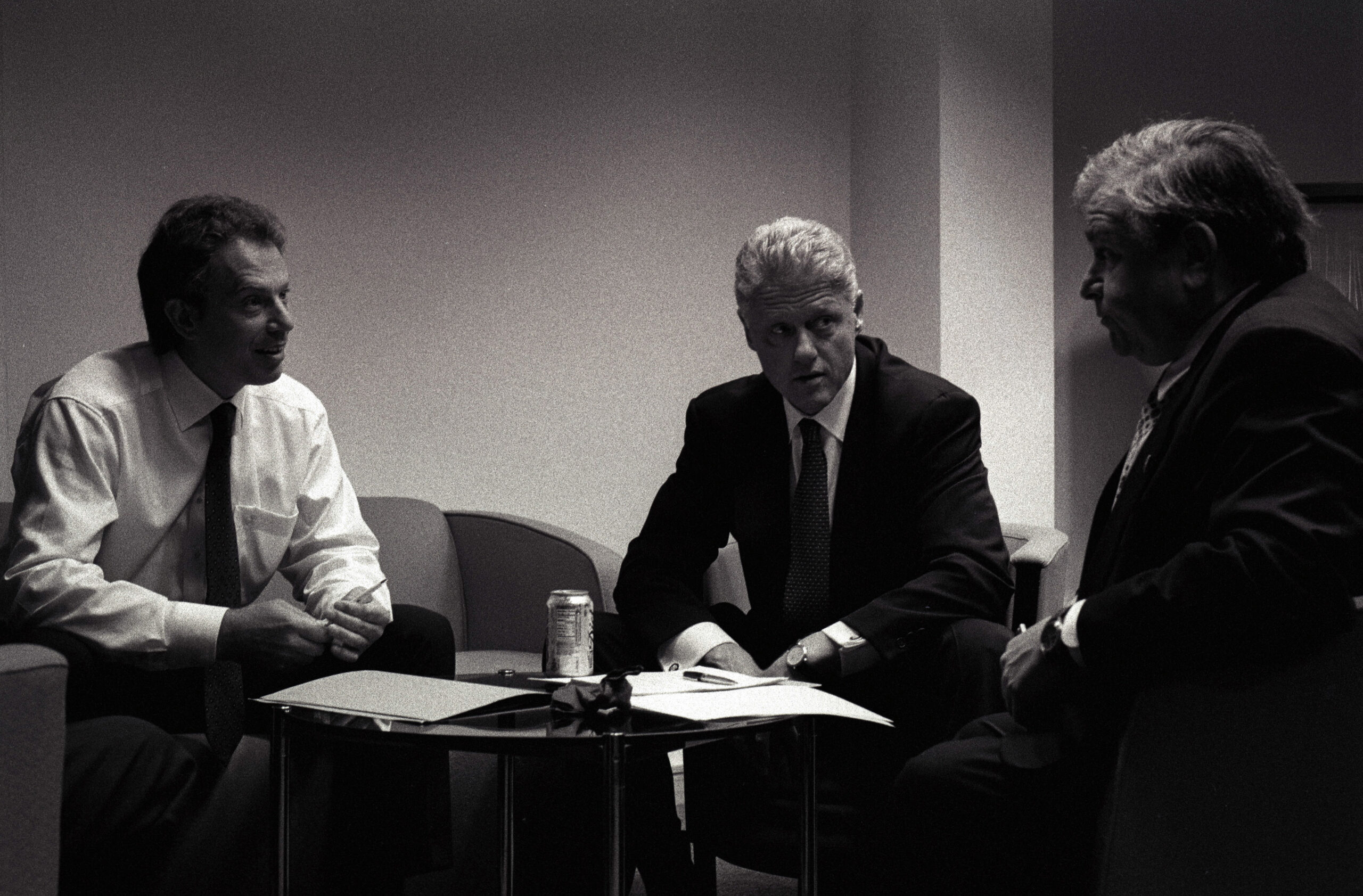
National Archives Identifier: 77148975

National Archives Identifier: 5722480
Bill Clinton traveled to Ireland three times during his presidency, but the most significant trip undoubtedly took place in November 1995, because by then, he had already begun to broker peace talks between the British and Irish governments and eight political parties and groups from Northern Ireland. These discussions culminated in 1998 in the Good Friday Agreement, which ended, for the most part, the Troubles, a series of violent upheavals that had been ongoing in Northern Ireland, Ireland, and the UK since the 1960s.
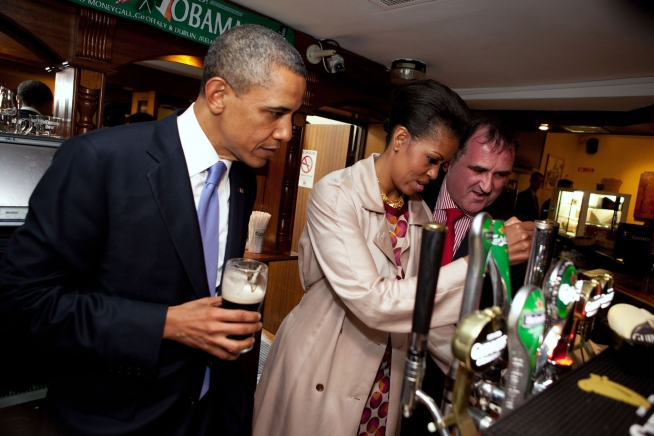
Source: Obama Library
“Days Like This”: President Clinton’s Public Diplomacy in Northern Ireland
Source: Clinton Library
And in 2011, President Barack Obama went to the village of Moneygall, where his great-great-great-grandfather had lived. He drank a pint of Guinness in a pub and introduced himself, saying, “My name is Barack Obama of the Moneygall Obamas, and I’ve come home to find the apostrophe that we lost somewhere along the way.”
